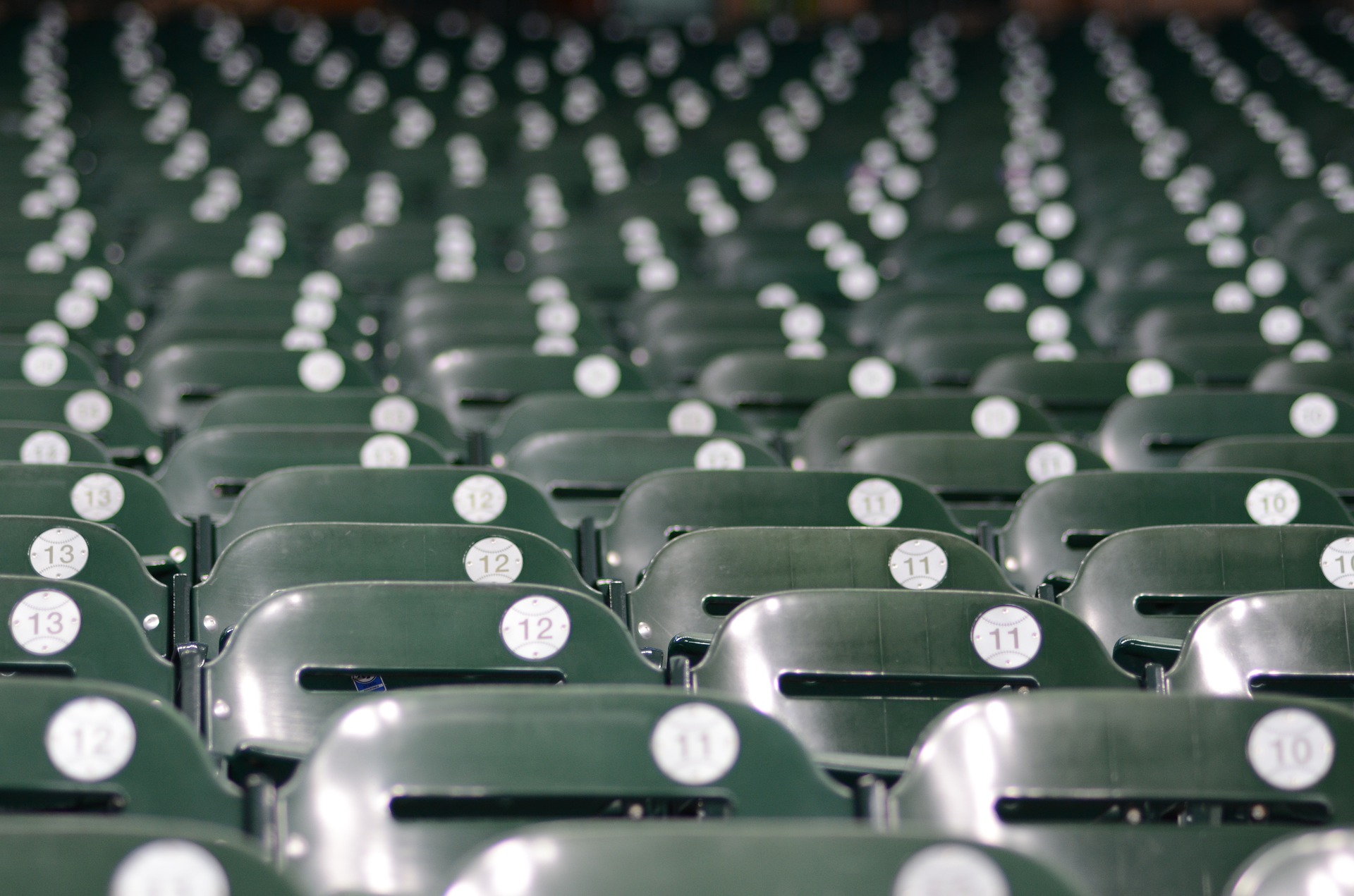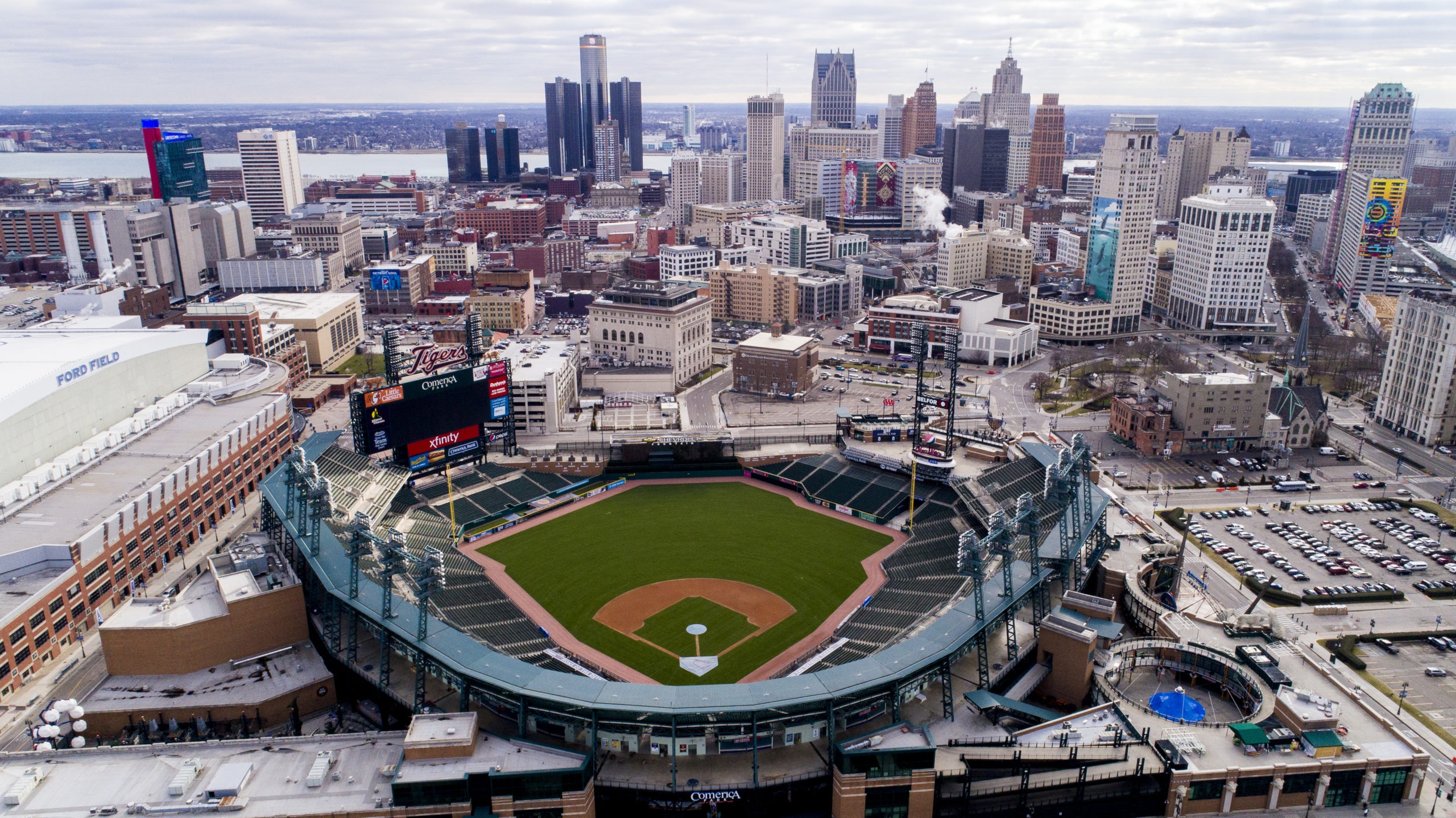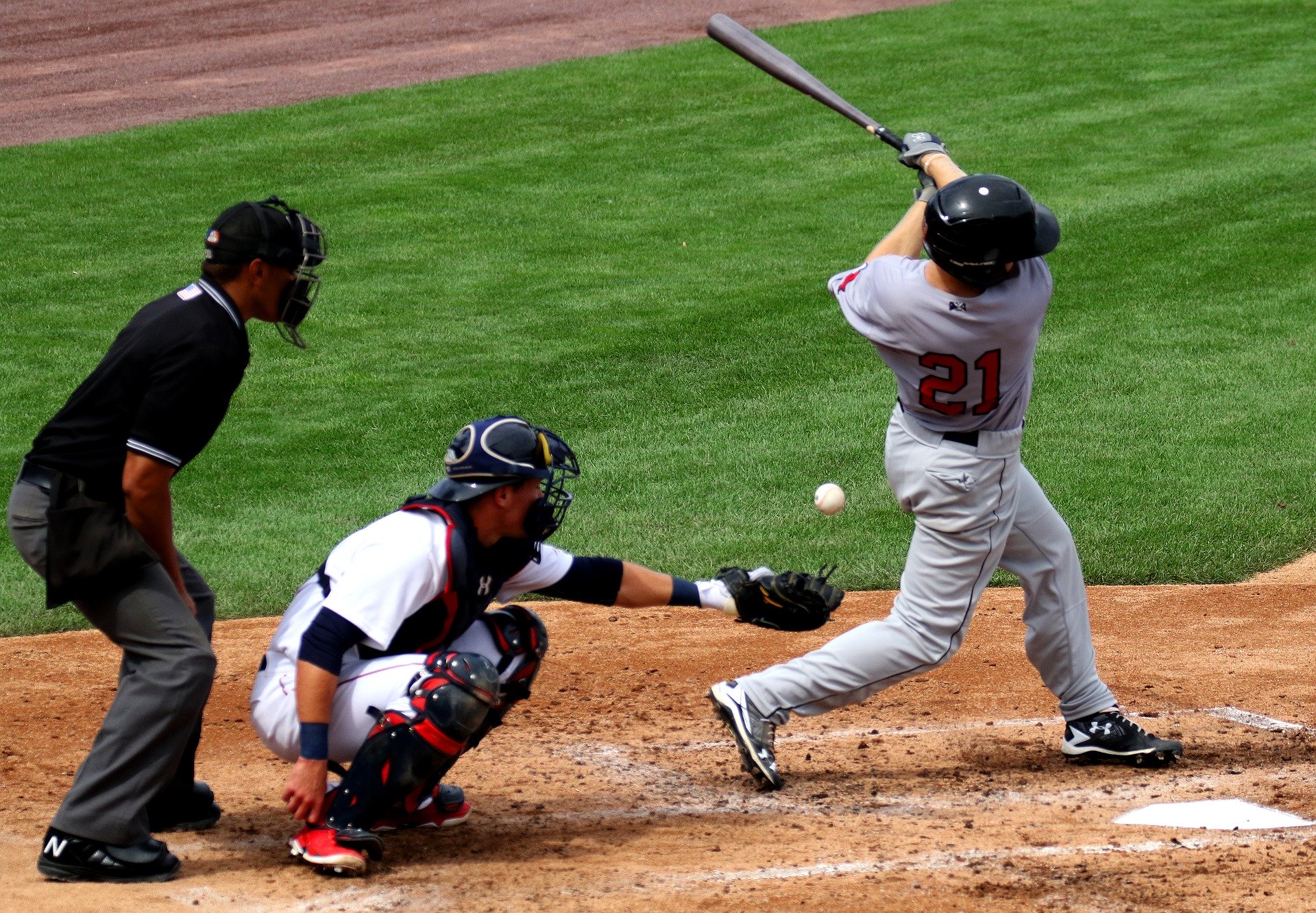
Sorry about all those acronyms in today’s headline. Try this:
*What Major League Baseball stars playing “baseball without fans” can learn from radio air talent.
Today marks the start of the COVID-shortened baseball season, a truncated schedule that could prove to be exciting – assuming, of course, the virus doesn’t end this makeshift season before it’s over. Tonight, the World Champion Washington Nationals take the field against those dreaded New York Yankees. Fittingly, Dr. Fauci will throw out the first pitch, more than likely wearing a mask.
I know a lot of happy sports radio PDs, managers, and consultants today who are hoping for the best.
But there’s no question this experiment in normalcy is strange all the way around. Opening Day is always in early April. Here in the Midwest, there’s often the threat of that first game getting “snowed out.”
And the parties and promotions that typically accompany this unofficial holiday can be epic.
But not this year. Everything’s changed, thanks to the coronavirus, in terms of how, where, and with whom we watch and listen to the games. Sadly, most of us will not set foot inside an MLB stadium this season.
 But aside from the players on the field (and social distancing in the stands), these baseball cathedrals will actually have more people on hand than you might think.
But aside from the players on the field (and social distancing in the stands), these baseball cathedrals will actually have more people on hand than you might think.
A Wall Street Journal story – “Baseball Without Fans Sounded Crazy. It Might Just Work” – estimates as many as 1,000 people will likely be in ballparks for each game this season. Aside from players and coaches, this includes umpires, stadium security personnel, TV camera operators, physicians and trainers, bus drivers, the ground crew, cooks, and others part of “producing” an MLB game.
What will it be like without all those fans in the stands, wearing costumes, doing the wave, and talking non-stop on their phones?
A lot like being on the radio.
Perhaps the best player in baseball right now, Angels star Mike Trout admitted to Fox Business that it won’t be baseball as usual:
“It’s going to be strange. I think any baseball is better than no baseball, so if we have to do it, we have to do it. It’s definitely something to get used to. It’s the world we’re living in right now. If that’s what it takes to get back, obviously that’s what we’ve got to do to get back.”
Air personalities – whether it’s on music, news, or talk stations – have always had to visualize a crowd, or at least a facsimile of an “average listener.” Most of the time, radio talent are staring at a piece of glass, so a lot of imagination comes into play to think about listeners – where they are, what they’re doing, and how they’re feeling. Every time they crack the mic, they’re tasked with being energetic, motivated, engaged, and on it – making every second count – not much different than every pitch or each at-bat.
 Both ballplayers and air personalities have to prep for their moments – breaks and trips to the plate. More often than not, the better preparation, the more positive the outcome. It also doesn’t hurt to have a strategy before cracking the mic or swinging the bat. Everyone’s on a team, of course, but performance is up to the individual performer, whether they’re wearing a jersey or a hoodie.
Both ballplayers and air personalities have to prep for their moments – breaks and trips to the plate. More often than not, the better preparation, the more positive the outcome. It also doesn’t hurt to have a strategy before cracking the mic or swinging the bat. Everyone’s on a team, of course, but performance is up to the individual performer, whether they’re wearing a jersey or a hoodie.
So, thanks to COVID, they’re going to have to uses their imaginations to feel the presence of spectators – their audience. But as a result of technology, there will be sound.
During this shortened season, there may not be crowds, but there will be “crowd noise” – or at least the simulated sounds of fans. And it won’t just be that steady “hum” that we’re used to hearing at stadiums and ballparks, especial;y on the radio.
It’s interesting that while playing baseball without fans in the seats is conceivable, playing without fan sound is not. And that’s where the technology comes into play, thanks in no small part to how advanced sports video games have become.
The league is using San Diego Studio, a division of Sony Entertainment, to fill in the audio gaps. According to AP, they’ve compiled 75 different sounds they’ve taken from the video game, “MLB The Show.”
Applying just the right sound at the right time is an art (think morning shows who deftly use just the right “drops” to add humor, snark, and color to interviews and bits in real time).
NPR’s Melissa Block gave us a better sense for this in a feature that ran this week, “Baseball Stadiums May Be Empty But You Can Still Hear The Crowds.”
Her focus was on soccer leagues which first applied artificial sound months ago. In an interview with Sky UK sound supervisor, Adam Peri, Block got a sense for the nuance of punching up the right EA Sports crowd sound at just the right time – including “booing.”
Interestingly, not every soccer league allows for simulated booing, and we won’t hear it in MLB games either. (After all, Barry Bonds and Alex Rodriquez are long retired).
Perhaps the league’s biggest winner of BWF will be the Houston Astros, the team caught stealing signs during the 2017 campaign – the year they went on the win the World Series. They were preparing for a large, raucous reception every time they stepped on the field this season. But ESPN reports that fans will not have the joys of booing the ‘Stros, whether at home at Minute Maid Park – or what promised to be even louder – when they took the field at an opposing stadium.
The key, as always, is in the execution. Veteran sports announcer, Bob Costas, put it in context:
“We’re kind of in a try-anything mode. You just don’t want it to sound like the laugh track on a bad ’60s sitcom.”
No, you don’t. But during COVID-19, all bets are off, the old “isms” are out the window, and even MLB is trying new things to make these games as meaningful as possible.
This experiment also reinforces the importance of audio to the MLB experience – and anything that involves sports and entertainment.
Best of luck to your team, your favorite players, and even your fantasy league.
And whether they can hear you or not, cheer for your team.
Loudly.
You can listen to NPR’s Melissa Block’s 3-minute feature here. Thanks to Bruce Warren for the heads-up.
- Media And Technology In 2025: Believe It Or Not! - April 18, 2025
- In Radio, You Just Never Know - April 17, 2025
- The Secret To Making A Great Podcast (And Great Radio) - April 16, 2025




Two throwback Thursday Broadcast Memories. President Ronald Reagan at an NAB Convention telling his story of broadcasting a baseball game on radio using a ticker tape. With men on base, the wire stopped working, so he ad-libbed for 10 minutes about foul balls and fans in the stands until it came back on, and the batter had struck out. Also, when I was a senior at McBurney School, NYC applying for colleges, one of the alums who was then broadcasting sports in Baltimore was introduced to me because of my interest in radio. His advice: “Whatever they ask you to do, go for it. You might make it work and they’ll never know you never did it before.” Thank you John Sterling. Here’s to being creative on radio and Play Ball!
I have a feeling, Clark, we’re so starved for baseball (and all sports) that even a less-than-perfect product will be suffice. It sure will be great to see those two teams take the field tonight, even though one of them is the Yankees.
All that’s missing is Gordon McLendon.
🙂